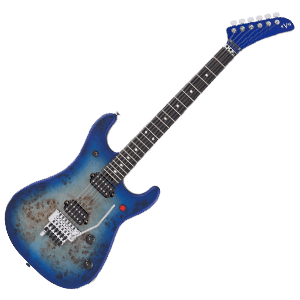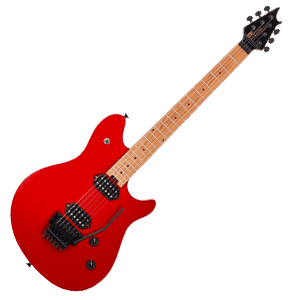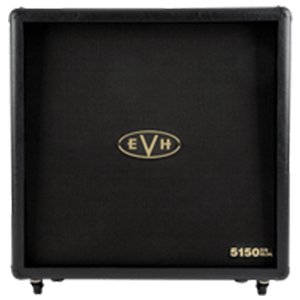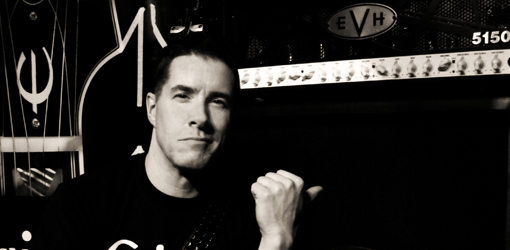Jeff Waters burst onto the metal scene with his band Annihilator’s hit 1989 album Alice in Hell and the Ottawa, Canada, native has been writing and performing ever since.
Waters has largely been touring Europe and Japan after Never, Neverland and Set the World on Fire came out in 1990 and 1993, respectively.
Currently working on Annihilator’s 14th studio album, Waters, who Voted the third best metal guitar player in the highly-acclaimed book “The 100 Greatest Metal Guitarists” by Joel McIver,
recently chatted with EVH about his career and his thoughts on metal’s renaissance over the past few years.
EVH: What was it like in the early 1990s when the music landscape seemed to be shifting away from mainstream metal?
Waters: “My band has been doing predominantly well since around 1989 in Europe and Japan. By ’93, we’d had three albums out in North America. The first three did fantastic in the States and Canada. We did lots of touring there, and that was a lot of fun. What I loved about the States is that you wake up every morning in a different state, and it’s like a new country every day.
When this kind of traditional heavy metal was kind of phased out when Nirvana, Pearl Jam and all that came in, I remember guys on my label at the time, Roadrunner Records, were getting rid of the all the heavy metal bands. Unless you want to the Pantera, Biohazard, Sepultura kind of thing and change your name or start a new group, they were dumping all the metal. I wasn’t interested in changing the name of the band.
I also had a kid around that time. His mother died of cancer when he was young, so I was a single father with a one-and-a-half year old. I was in a position in North America where the possibility of touring and getting deals were fading out. I couldn’t go away full time because of my kid, too.
What prompted you to head overseas?
My father stepped in and said, “Listen, Europe’s a big thing for you still. So is Japan. Why don’t you go there part-time. Go away for a month. We’ll take care of your son, and then you can come back. Then you can keep putting records out, get a house, build a studio…” All this lovely stuff that I was able to do from the money I made there. I’ve had a good career, but not in the States or even my home country since ’93. Fortunately, it’s been going so well that we’ve been rocking over there.

Have you been in the studio recently?
We’re working on our 14th studio album now. We’ve finished that up, and are just dealing with the legal stuff with the European label. We’re also planning on figuring something out with a label here in North America. Hopefully, that will mean we can come back and really do some great touring in the States and Canada.
I haven’t really stopped writing, touring and recording since ’89. I’m kind of a lucky guy.
What was your reaction when Alice in Hell hit big?
That was kind of a worldwide hit. I think it was the biggest independent release of that year for metal. I was just a kid and partying and having fun, and I went from my parent’s basement, literally, to moving out to Vancouver from my home city of Ottawa. It was an overnight thing. We never did any touring. We just were in the basement making demo tapes on little four-tracks. Roadrunner Records said, ‘Hey, we’ll be happy if your record sells 20,000 units worldwide, we’ll be happy with that.’ We added another zero and doubled it.
Then, we had another record a year later back when the labels loved to pump out a record a year. I remember that the first thing I picked up on was how Van Halen, with their first few albums, how quickly they came out. They’d put out an album, hit the road and, bang, another album comes out. That’s what happened to me in the early days. When our second record – Never Never Land – was even bigger, which was surprising to me. I thought I was lucky to just be able to make a record with a record deal. The third one came out on Sony, but that was the time when metal was kind of fading.
From a European perspective, our first four albums were technically huge out there, but the first two were really the ones that North Americans have heard. It’s funny, sometimes when I travel to festivals and see friends in other bands around here, people will say, ‘Oh, I loved Alice in Hell and Never, Neverland!’ And then you realize, of course, those are the only ones that were really promoted and were around. It’s awesome talking to people outside of my studio that actually have those records and like them.
You worked with some of metal’s finest players on the album Metal (2007), such as Alexi Leiho of Children of Bodom, Willie Adler of Lamb of God and Corey Beaulieu of Trivium. What was that like?
I was just thinking, ”Why don’t I call people who I know are friends and liked my music and see if they want to play a song on the record?” I made a short list, but the next step was how to get 10 or 12 big-name musicians on your record with all the legalities with the record companies, but somehow we did it. All the managers and labels stepped back and said, “Sure, have fun with it.” That’s unheard of. Some people we had to go back and forth on the Internet, and others came by my studio in Ottawa.
It was really cool to have people on there who I really like and respect. It was also cool because you had fans who follow bands like Lamb of God or Trivium, younger fans who followed guys Willie and Corey that might not have known us. It was another audience for us.
What do you think of the way some younger players are stepping up?
I know when I was growing up in high school, me and all my guitar-player friends were playing constantly trying to learn to play the Randy Rhoads stuff, the Van Halen, the Angus [Young, AC/DC], and you couldn’t just play that. You had to actually sit in your room and practice three or four hours a day for a year or two to even butcher your way through the music.
There was a shift away from that in the 90s, but then I saw in 2000, there were guys like Alexi Leiho. You started seeing bands like Sum 41 and other pop-punk bands on MTV or MuchMusic wearing Motorhead, Iron Maiden and Judas Priest t-shirts. It was like, “What the hell?” But you’d also say, “Hold on a sec, that’s an Iron Maiden-style harmony solo in that song.” Then you’d see some of these new guitar players asking about Randy Rhoads, asking about Eddie Van Halen. You’d see people actually sitting down and practicing their instrument and learning the craft.
When we toured with Trivium in 2007, I was stunned to see their two guitar players, Matt [Heafy] and Corey down in the dressing room practicing for six hours a day. They would download guitar lessons. It’s coming back full swing. People understand that to play metal, you’ve got to practice to get good. Now, we’re at the point, at least musicianship-wise, that people can learn with the Internet where good metal came from and how to do it.
You recently joined the EVH family and have been using the 5150 III amp. What are your early thoughts on it?
That middle channel – Channel 2 – and the clean channel, that’s it. I don’t even use the gritty third channel. I just go back and forth between the two [laughs]. It’s just such a good sound. I had an experience a few years ago when we were touring with Judas Priest a few times in Europe. I remember an album they did called Painkiller in 1991, and we toured for about three months with them. I had the opportunity to go onstage and play K.K. Downing’s amps. I asked him at one point if I could try his guitar through the rig thinking it would sound just like Painkiller. It actually sounded just like me.
With the EVH amps, people say, “We know you’re a big Eddie fan. You’re just trying to get his sound.” I’m like, “A lot of it is in the amp, and a lot of it is in the playing.” When I plugged into that 5150 III, It sounded like me, but better. That’s how I look at it.
For me, it’s really simple. Despite all the effects and pedals that you can use, this just sounds great when you plug it in. I can’t wait to use this thing on stage.
Check out Annihilator’s official website for more information.










